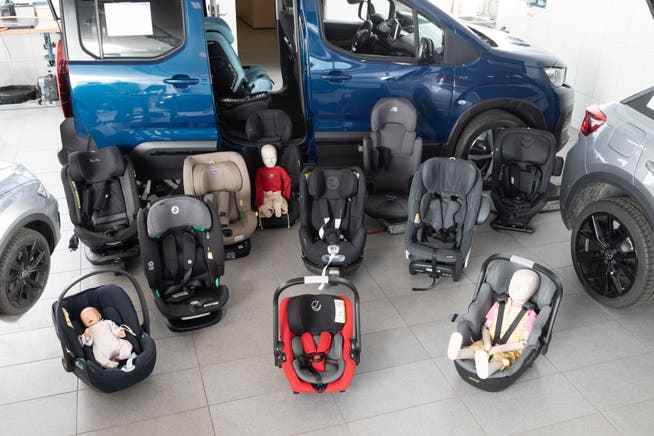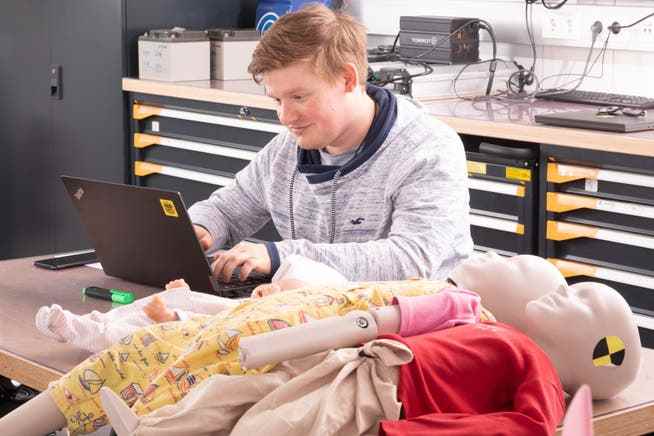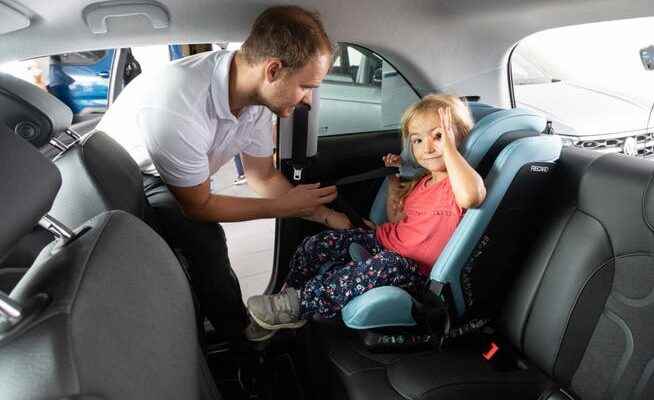The handling of the child seat is also one of the evaluation criteria in the TCS test.
Safety in the car, especially for children, is constantly improving. But the numbers are still frightening: every year around 400 children are involved in car accidents in Switzerland, and seven of them die. In addition, every second child is not properly secured in the car, and according to the Touring Club Schweiz TCS, one in fourteen children is not secured at all.
Without a child seat, a child in the car is three times more at risk, says the TCS. But buying a child seat is not trivial. It depends on the weight and height of the child which seat is the right one.
The differences in product quality in the wide range are enormous. It is therefore worth checking the child seats on sale regularly. The TCS takes over this task with recurring product tests. In October 2022, he tested a total of 20 child seats of various sizes. Safety in the event of an accident, handling, ergonomics and the pollutant content of the seats were evaluated.

A total of 20 products for children of all heights and weights were tested in October 2022.
Rating too benevolent
The result is mixed. A total of thirteen seats received the highest rating of “highly recommended”. But a more detailed analysis of the results shows that 60 percent of the criteria are already sufficient for the top rating. One may ask whether the rating is too benevolent – at most a concession to the manufacturers and sellers of child seats.

Children’s dummies of various sizes were used for the crash tests.
Parents who want to give their children complete protection in the car will not find what they are looking for, because the seat with the very best test result achieved just 78 percent. Apparently this has to be enough for optimal child protection. “The results of each seat tested are for consumers viewableso buyers can decide for themselves which criteria they want to focus on when making a purchase,” says Sarah Wahlen, media spokeswoman for TCS, evasively.
In the test, six child seat products scored “recommended”, for which criteria of 51 to 60 percent were sufficient. It is questionable whether such seats are really to be recommended.
You don’t see any pollutants
The fact that a seat from the Jané brand only met 18 percent of the test criteria is downright shocking. With safety at 74 percent and handling with 64 percent, it was still in the “highly recommended” seats, but the test for pollutants revealed traces of naphthalene and the flame retardant TCPP in the upholstery fabric. Both substances are suspected of being carcinogenic.
All results can be found here.
Child seat regulations
Two different standards apply to child seats across Europe. The ECE R44 standard is based on the age and weight of the child and, in the case of children from the age of 5, on the body length. Since 2014 there has also been the ECE R129 standard, which is also known as i-Size. Such child seats must be rear-facing in the car for at least the first 15 months of life in order to protect the still weak neck muscles of the little ones.
